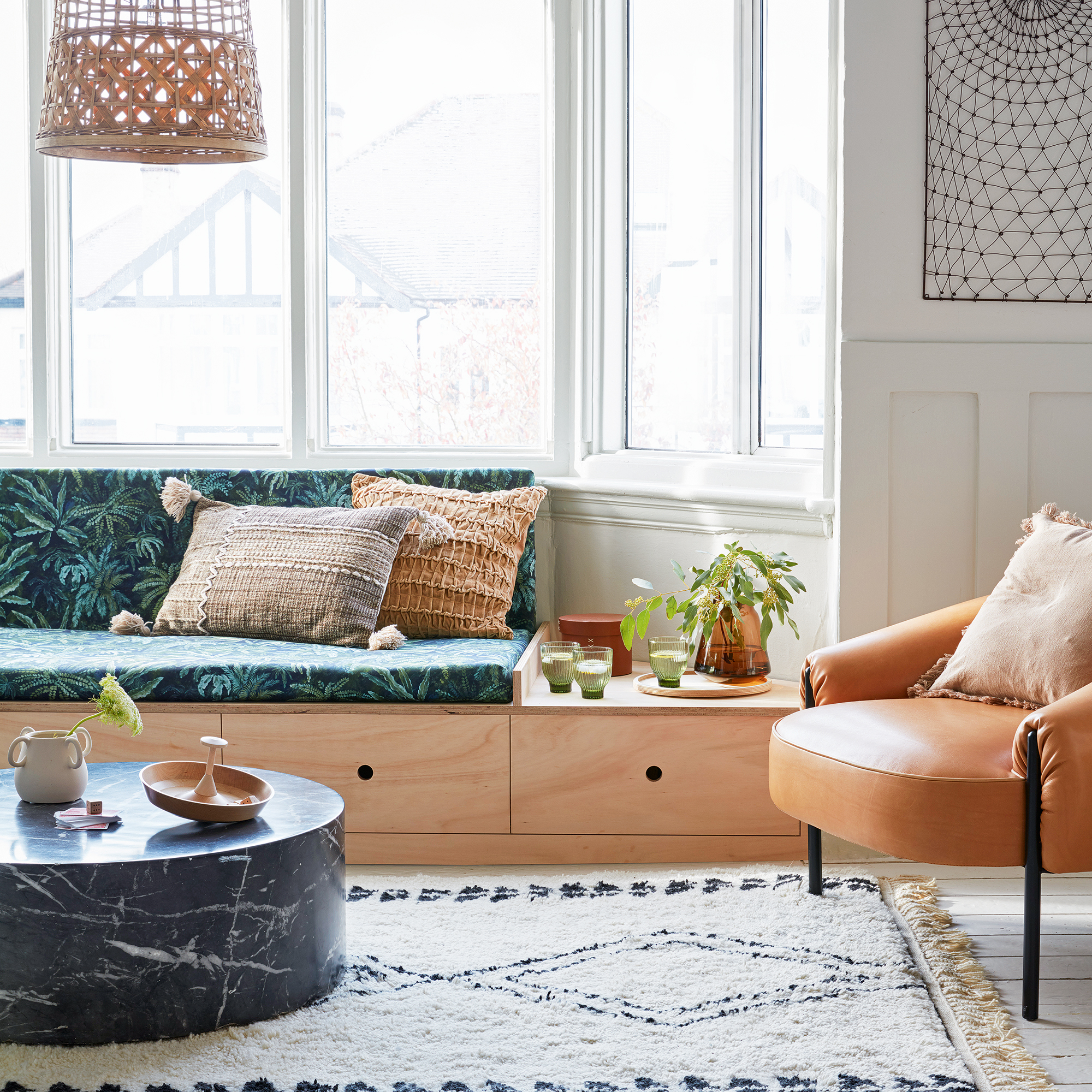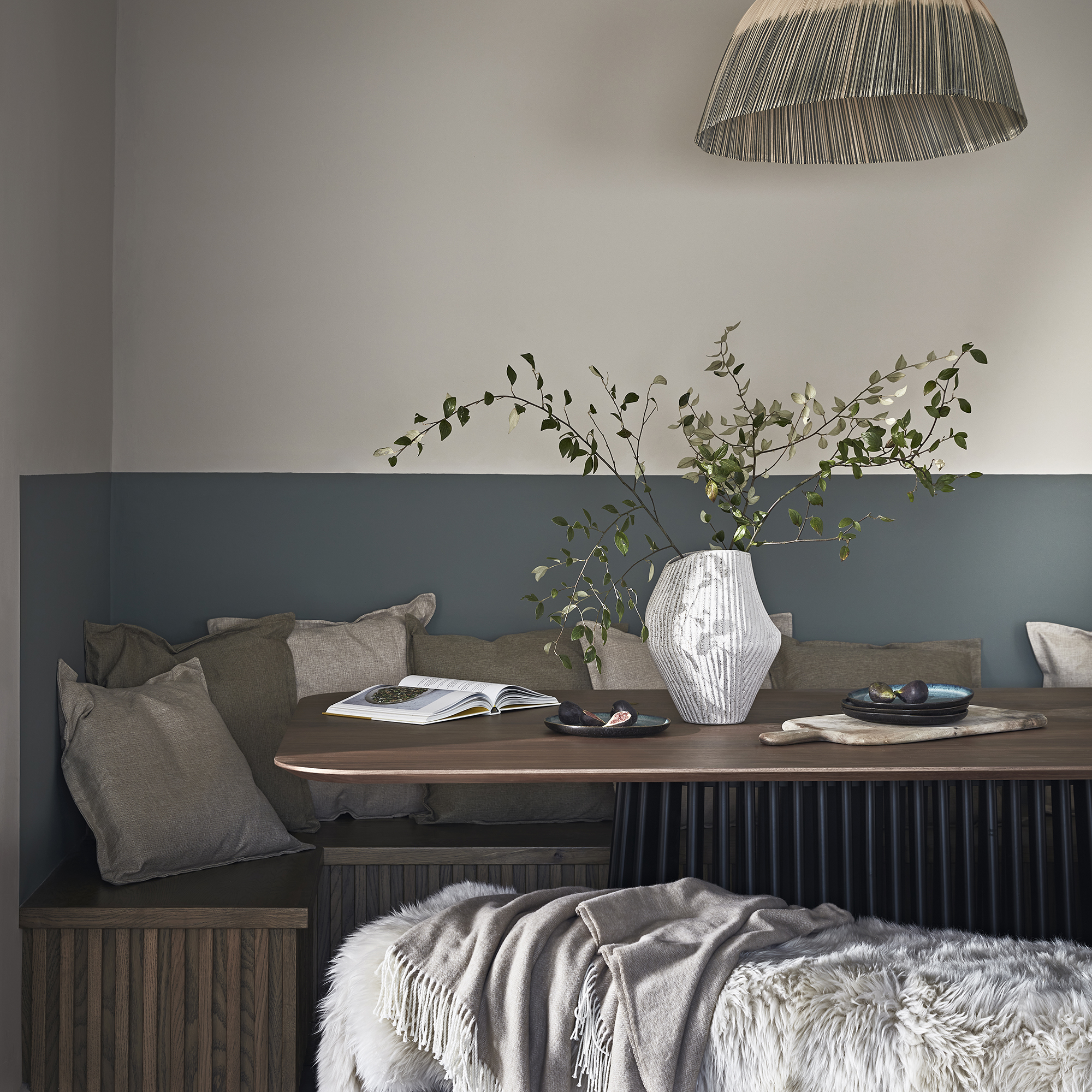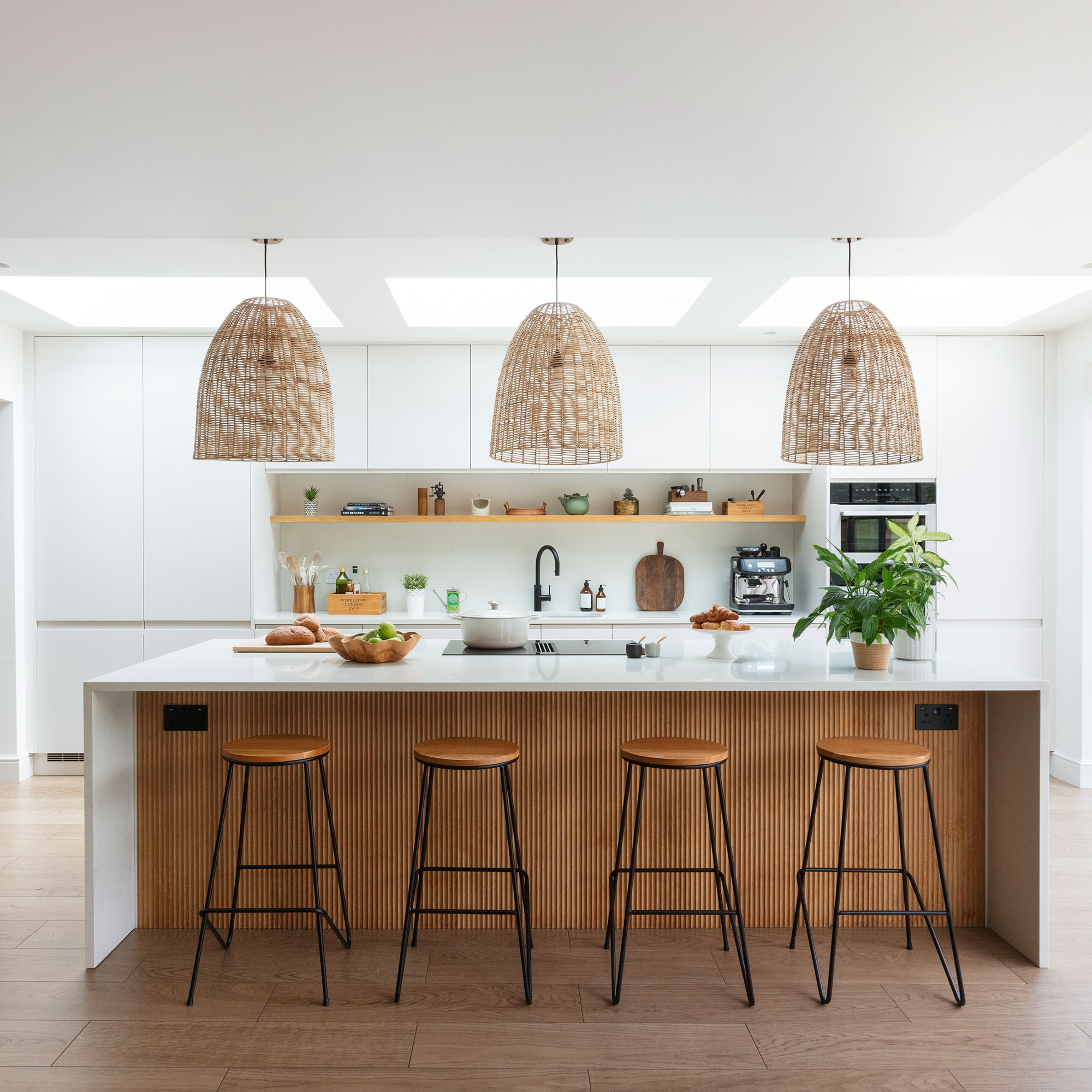8 things in your living room making you feel stressed and how to fix them fast
Get wise to the sneaky stressors that are spoiling your chill and redesign your space for premium downtime


People talk about the kitchen being the heart of the home, but the living room is slowly stealing that title. It's the spot where you unwind in the evening and gather together with friends and family. Unfortunately, it is also a place where you will often find things that stress you out, disrupting your inner peace.
The living room is our mental health haven, social venue and recharge station all in one. Your living room decor ideas need to serve each of these purposes, however, when planning a room it is easy to focus on the looks and not on how the space makes you feel. This is unfortunately where those sneaky stressors can creep in.
Some things might be obvious – like the clutter that’s crept up on you or the neighbour who can see right in. Other issues are harder to spot…
Living room stressors
We asked experts in colour psychology, interior design and lighting design for their perspectives on the hidden living room stressors that are harshing your mellow.
1. The colour on the walls is too extra

It’s tempting to follow maximalist colour trends, but beware of the influence they can have on your mood. Psychologist and wellbeing expert Lee Chambers warns, ‘While we can have different interactions with colours depending on preference and symbolism, it is worth considering that red can be stimulating, increasing heart rate and evoking a sense of urgency which may amplify feelings of stress or overwhelm.
‘Bright and bold oranges and yellows can have a similar impact, used in excess, giving energy and a desire to do something, which can cause agitation and frustration.
‘In contrast, cool, dark colours (especially with insufficient lighting) can feel cold and unwelcoming. For some people, this will make them feel uneasy and less safe, which may be stressful. Too much contrast between colours can also be visually stressful, which can be uncomfortable for some individuals and make a space feel overstimulating.’
Get the Ideal Home Newsletter
Sign up to our newsletter for style and decor inspiration, house makeovers, project advice and more.
Lee advises looking at colour in context: ‘For a calm, relaxed living room, look beyond colour to lighting, textures and personalisation.’
Which calming colours for a living room should be on your shortlist? ‘Look to soft blues and greens, which are often linked to a sense of serenity and natural balance. Earthy, neutral tones such as taupe are warm and grounding. For a bit more energy, lavender or lilac can bring balance and calm confidence, and pale pink can gently lift the spirits. Off-whites can be great for creating a spacious feel that’s not too clinical, and muted greys can give subtle sophistication alongside some tranquility.’
Farrow & Ball’s Vert de Terre (£59 for 2.5ltr Modern Emulsion) is a works-everywhere mid-toned green, and ideal for creating a calming living room.
2. Clutter hotspots

Professional organiser and psychotherapist Kate Ibbotson explains why living rooms are such a hot spot for clutter: ‘The living room may need to adapt to the needs of multiple family members, so it can be tricky to get the space to feel right for everyone.
‘The living room is a place to put your feet up and relax, so when things are out of place or in transit, such as piles of paperwork or ironing waiting to be done, it simply reminds us of the things we have left unfinished.’
To make quick work of clearing your living room of clutter try Kate’s hit list of anti-clutter strategies:
- Keep furniture to scale. Too large and it creates a crowded feel.
- Look for furniture with built-in storage (tables with drawers, lift-up ottomans).
- Opt for cubbyhole shelving with wicker boxes for children’s toys.
- Invest in boxes for TV remotes and game consoles to give them a ‘home’ when not in use.
- Make a daily routine of clearing food packaging, papers, crockery and items that don’t belong there.
3. Reliance on the big light

People make the same mistakes when it comes to living room lighting ideas, lighting guru David Village explains: ‘Relying on a central pendant light as the only light source can be inadequate. Also, not considering how you may want to use the room can impact the effectiveness of lighting. Lastly, not making the most of the space by highlighting architectural or design features is a missed opportunity to elevate it.’
His advice is to start by rethinking ‘the big light’: ‘Use more than one electrical circuit to give flexibility when it comes to dimming and control. For the central pendant light, your choice should be glare-free to create a comfortable lighting experience. Choose a design which conceals or diffuses the bulb.’
Next, layer light by adding table or wall lights, which can also create decorative effects if you choose up or downlighters. David adds, ‘Wall-mounted task lights are a useful way to add personal light where there is no space for a table lamp. It’s also important to illuminate features such as fireplaces and pictures with subtle LED spotlights.’
Try out the lowkey Clyde LED MoodMaker wall light from Lampsy which gives three levels of lighting and is plug-in, so you don’t have to get it wired in.

David has worked in the lighting industry for more than 40 years, including more than 20 as a lighting designer. He founded his Sheffield-based business, David Village Lighting, in 1981 and takes on both commercial and residential lighting projects.
4. The TV dominates the room

TV screens have got bigger and bigger over the years and, while we’re loving the cinema experience on a Saturday night, it’s not always great for your comfort or the style and multifunctionality of the room.
So what size would be best for yours? Interior designer Anna Marie Stoltman says, ‘It’s not about the size of the room. It’s about the distance between the TV and wherever you will be watching from. People often make the mistake of going for the biggest TV they can fit in or can afford. What you should be thinking is, “Will I be comfortable? Will I have to tilt my head? Will I have to look up or down?”
'Ideally, you want your TV to be exactly at eye level when sitting down. And it should be about 180cm away from you with a middle-sized TV. It’s always best to check the manufacturer’s website for the most accurate guideline.’
It’s easy for a living room to become all about TV watching, at the expense of conversation and other activities. Anna continues, ‘If possible, you don’t want the TV to be the first thing you or your guests see when you/they walk into the room. If you can, position the TV on the same wall where the door is so you can’t see it from outside the room.
Alternatively, there are ways to hide a tv, and integrate it into your decor. Anna says ‘Some kind of bespoke storage solution to accommodate your TV doesn’t have to cost the earth.
'You could also create a focal point, such as a feature wall, to draw attention away from the TV. This could be a gallery wall or one big piece of art. Simply painting one wall in a different colour will divert the eyes from the TV. Another option is to paint the wall behind the TV in a darker shade of the colour you have used, so that your screen blends in with the wall.’

Anna Maria Stoltman studied for a diploma and foundation degree in interior design before completing a BA in interior design at the National Design Academy. She now runs her own affordable interior design service and home staging business, Very Me Interiors.
5. The layout is working against you

If your room feels claustrophobic or is hard to walk around without banging your knees or shins, it could be a sign to scale down your furniture or work out a happier living room layout fix. Anything that’s partially blocking doorways or pathways around the room certainly needs sorting as it could slow down your escape in a fire.
Interior designer Anna Maria Stoltman adds to this, ‘One of the common mistakes that people make is pushing all the furniture against the walls and leaving the middle of the room empty. Placing a sofa on one side of the room and a couple of chairs on the other side of the room does not invite you to a conversation, as it may lack intimacy and cosiness.’
‘Of course, the size of the room is important,’ says Anna. ‘With small rooms, you have to be more creative and think about the different functions of the room. Bigger rooms often feel cold and unwelcoming. Think about all the different activities that take place in the room. Also, think about how you want to feel in that room. If you want to feel relaxed and cosy, then you will probably have a completely different approach to the design as if you wanted the space to feel fresh and minimalistic.’
6. You’re feeling watched

A lack of privacy is one of the most irritating things about urban living, especially if your neighbours treat your life like their own personal reality TV show. It’s an issue that Lewis Maguire, an advisor for Hillarys, is often asked to come up with a solution for. ‘Balancing privacy with maximising natural light and a feeling of connection to the outside world can be a tricky tightrope to walk,’ he says.
The best window blind ideas he recommends for privacy are layering sheers with blinds or shutters. ‘You can enjoy natural light filtering through the sheers during the day, then close the blinds or shutters when you switch the lights on.’
If you want to preserve the light levels but privacy too, another option is top-down, bottom-up blinds, ‘These control privacy at eye level while preserving natural light and your window onto the world,' he explains.
However, for a very on-trend look you can opt for cafe-style curtains or shutters. 'They just cover the bottom half of your window. Some customers combine them with Roman blinds or curtains for a soft finish, or to introduce pattern and colour.'
However, if you need an even more affordable or non-permanent options window film can keep you the privacy you need. For example, Purfrost’s plain window film is a low-cost option for frosting, or partially frosting your window costing £12.25 for 50cm x 50cm.
7. The sofa’s making your back ache

We always blame our mattress for aches and pains, but what is boxset bingeing doing to your body? A comfortable sofa will have three qualities: supportive filling, a thickly wrapped frame and the right angles for your height.
Nicky Line, chief product officer at Loaf, explains what to look for when finding the best sofa: ‘Feather, or a combination of foam and fibre. These ingredients should be tailored to suit the style and sit of the individual design.’
You shouldn’t be able to feel the frame through the upholstery. Nicky says, ‘Adding extra foam around the timber ensures every corner, side and arm is soft. You also need to be able to kick back in comfort no matter your height. Check that the rake (how slanted the back of the sofa is) suits you for a properly laid-back sit. However, if you’re shorter, you should consider a sofa style with a narrower depth and a lower height.’

Nicky studied history at Durham University before working for furniture retailers Feather & Black, Neptune and Made.com. She is currently a product expert at Loaf.
FAQs
What everyday things cause stress?
Kate Ibbotson of A Tidy Mind, a professional organiser and psychotherapist, explains, ‘There is a saying, “tidy home, tidy mind”, in reference to the long-held connection between our physical environment and emotional wellbeing. Clutter is subjective and what adds value for one person will be different for another. But a clutter-free home is known to reduce stress, anxiety and depression, and improve happiness.
'Paperwork in particular can be a source of stress if it’s related to medical treatment, legal disputes, bereavement or divorce. Our clients often procrastinate sorting this.’
Can objects cause stress?
‘Any objects that are being kept out of a sense of obligation or guilt can trigger stress and conflicting feelings,’ says Kate. ‘They may not be practical for the space or be to your taste, so we always ask our clients how they feel about an item and if it works for them, to encourage autonomy in their decisions.’
If you're finding yourself stressed out in your living room and you can't work out why, it might be a sign to take a look around you.

Vanessa Richmond has been a freelance writer, editor and editorial consultant since 2021. Her career in magazines began in 1998 and, apart from a four-year stint at women’s lifestyle magazine Red, it has been spent working on interiors titles including House Beautiful, Country Homes & Interiors and Style at Home. She is a former editor of Ideal Home, Country Homes & Interiors and Style at Home magazines. She has also worked for House Beautiful and Red. During her 25 years as a journalist, she has been a sub-editor, columnist, deputy editor and editor. Now she combines freelance writing with being a secondary-school English teacher.
-
 The 6 outdoor lights from Habitat that I'm choosing between to make my outdoor space look more expensive this summer
The 6 outdoor lights from Habitat that I'm choosing between to make my outdoor space look more expensive this summerI couldn’t believe some of the prices
By Ellis Cochrane
-
 Joseph Joseph 3-piece Saucepan review – seriously space-saving
Joseph Joseph 3-piece Saucepan review – seriously space-savingSmall kitchen? I tested this innovative Joseph Joseph space-savvy set which has foldable handles — and I loved it
By Annie Collyer
-
 Forget seating, this is how you should be making the most out of your kitchen island in 2025
Forget seating, this is how you should be making the most out of your kitchen island in 2025Seating doesn't always have to be a necessity on an island when you can choose these ideas instead
By Holly Cockburn
-
 Hygge living room ideas — 6 ways to warm up your home with this Danish concept and cosy aesthetic
Hygge living room ideas — 6 ways to warm up your home with this Danish concept and cosy aestheticHunker down until summer finally arrives with these warming ideas
By Rebecca Knight
-

 How to create a sensory home – interiors experts reveal 5 easy ways to style your home and soothe your mind
How to create a sensory home – interiors experts reveal 5 easy ways to style your home and soothe your mindYou can turn any space into a sanctuary by following these simple steps
By Maddie Balcombe
-

 Can displaying family photos at home make you happier? According to research it can — 5 ways to do it in style
Can displaying family photos at home make you happier? According to research it can — 5 ways to do it in styleHarness the mood-boosting power of looking through old photos by displaying your favourites
By Rebecca Knight
-
 How to make a hallway smell incredible without candles - 7 ways to gently fragrance your entranceway
How to make a hallway smell incredible without candles - 7 ways to gently fragrance your entrancewayGo flame-free to safely scent your entryway
By Vanessa Richmond
-
 6 ways I brighten my home in January when the Christmas decorations come down, as an interior stylist
6 ways I brighten my home in January when the Christmas decorations come down, as an interior stylistHelp banish the winter gloom with these uplifting ideas
By Laurie Davidson
-
 Kitchen hacks to encourage healthy eating habits — 7 ways your kitchen can support healthy living
Kitchen hacks to encourage healthy eating habits — 7 ways your kitchen can support healthy livingMake creating healthy changes easy by following these tips
By Eilidh Williams
-
 How to reset your home after Christmas to restore a sense of calm
How to reset your home after Christmas to restore a sense of calmFollow these 7 steps to get back to normal at home and beat post-Christmas blues
By Eilidh Williams
-
 How to make a house look more inviting - 8 ways to quickly boost your house’s appeal in time for Christmas
How to make a house look more inviting - 8 ways to quickly boost your house’s appeal in time for ChristmasMake visitors feel welcome from the second they step foot on your property
By Vanessa Richmond